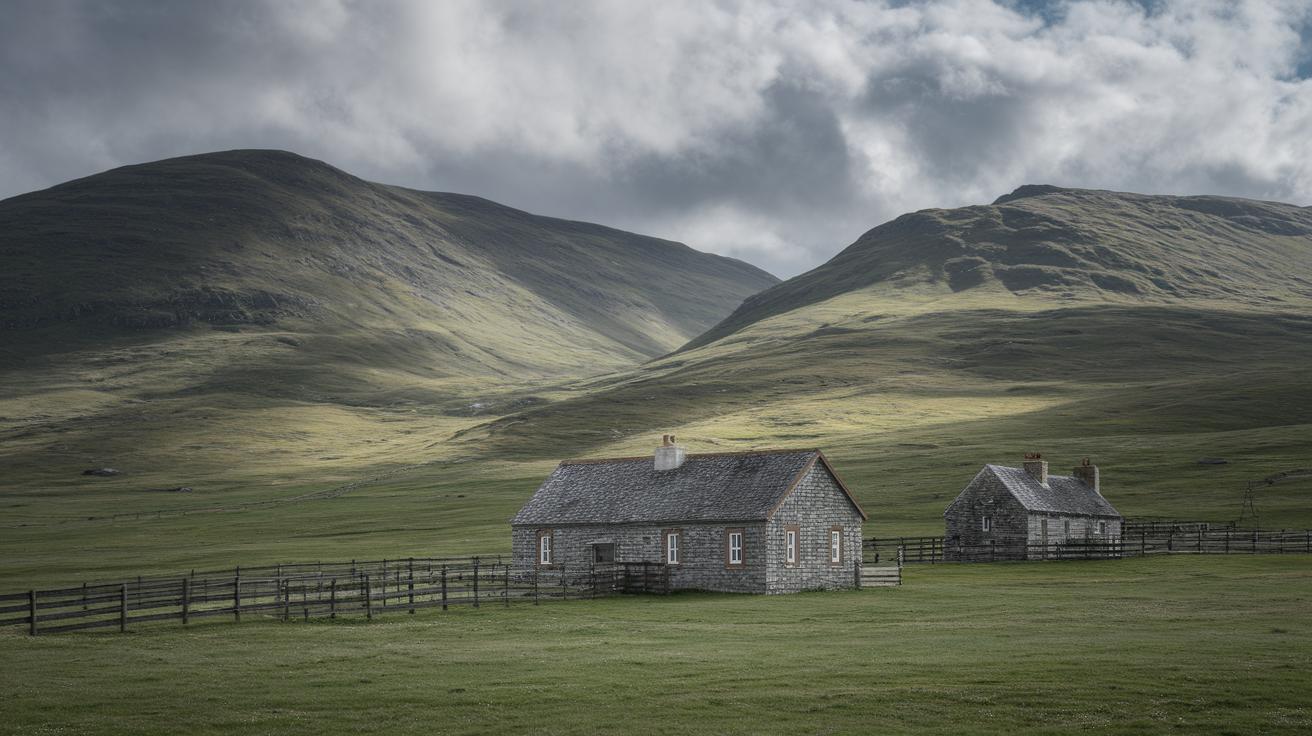A Beginner’s Guide to Scottish Vintage Food
Scottish cuisine, steeped in history and tradition, offers a truly unique culinary experience unmatched elsewhere. This delightful blend of hearty ingredients and unique flavors is celebrated annually during Burns Night, an event honoring the famed Scottish poet Robert Burns. This guide provides an insightful introduction to the world of Scottish vintage food, exploring iconic dishes like haggis, neeps and tatties, and the world-renowned Scottish whisky. Whether you’re planning a Burns Night celebration or simply curious about Scottish culinary traditions, this guide will prepare you to embrace the flavors of Scotland with enthusiasm and understanding.
What is Scottish Food? Your Guide to the Ultimate Burns Night Celebration
Scottish food is synonymous with hearty, comforting dishes that reflect the rugged landscapes and rich heritage of the nation. Known for its simplicity and reliance on locally sourced ingredients, the cuisine is characterized by a unique blend of flavors that range from savory to subtly sweet. Central to Scottish cooking are proteins like game meats, fish, and dairy, alongside root vegetables and oats.
Among the most celebrated occasions revolving around Scottish food is Burns Night, held every January 25th to commemorate the birthday of Scotland’s national poet, Robert Burns. This night is not just a tribute to the Bard, but also a celebration of Scottish culture through poetry, music, and, significantly, food. A traditional Burns Night supper is a joyous gathering where family and friends share a meal highlighted by classic Scottish dishes and, inevitably, poetry recitations.
Burns Night
Burns Night is a time-honored event where the richness of Scottish culture is in full display. This celebratory night is an immersive experience—a symphony of tartans, bagpipes, traditional toasts, and, of course, a feast of Scottish delights. It’s a tribute not just to Robert Burns but to the country’s cultural heritage as a whole. The events typically begin with a gathering of guests who enjoy a wee dram or two of whisky while anticipating the feast to come.
The centerpiece of Burns Night is the supper, a culinary spread anchored by haggis, often described as the national dish of Scotland. Piping in the haggis is a revered tradition, complete with bagpipes and a poetic address to the haggis, traditionally recited by the host. This is followed by a toast and the serving of the main dish, accompanied by neeps and tatties. The night concludes with readings of Burns’ poetry and songs, often featuring lively ceilidh dancing, ensuring a memorable celebration of all things Scottish.
Traditional Scottish Food
Haggis
Haggis, more than any other dish, embodies the spirit of Scottish cuisine. A savory pudding made from sheep’s pluck (heart, liver, and lungs) mixed with oatmeal, suet, and seasoning, all encased in the animal’s stomach. Though it may sound daunting to the uninitiated, haggis is a flavorful and richly spiced dish that captures the inventiveness of Scots using available resources to create something exceptional.
In modern variations, the traditional stomach casing is often replaced with artificial casings or even vegan and vegetarian versions to cater to diverse palates. Regardless of its make-up, haggis is best enjoyed during Burns Night, accompanied by the requisite poetic “Address to a Haggis,” making it not just a meal, but an interactive cultural spectacle. Its robust flavors are best enhanced with a hearty serving of neeps and tatties, bringing together a balanced and satisfying meal.
Neeps and Tatties
Neeps and tatties are quintessential accompaniments to haggis, forming a trinity of flavors that define a Scottish meal. Neeps, or turnips (often using swedes), are mashed to a silky consistency with butter and a hint of seasoning, offering a slightly sweet flavor. Tatties, or potatoes, are likewise mashed and augmented with cream or butter, providing a creamy texture that beautifully contrasts with the structured spices of haggis.
This simple dish speaks volumes about the resourcefulness of Scottish cooking, utilizing root vegetables that thrive in cooler climates. Whether served on Burns Night or adapted into everyday meals, neeps and tatties illustrate the ingenious ways Scots have sustained themselves through the ages. They are a comforting reminder of culinary traditions that have stood the test of time, all while delivering a taste experience that is both wholesome and nurturing.
Scottish Whisky
No exploration of Scottish food is complete without mentioning Scottish whisky, often referred to as the “water of life” or uisge beatha. Whisky is more than just a drink in Scotland—it’s a cultural icon, as deeply interwoven into the country’s legacy as its literature and music. With regions like Speyside, Islay, and the Highlands each offering distinct styles, Scottish whisky presents a diverse palette of flavors ranging from light and floral to peaty and robust.
Whisky is an integral part of the Burns Night tradition, finding its place in both the toasts and in many Scottish recipes. Its richness complements the hearty nature of the food, creating a harmony of flavors that elevates the dining experience. While the complexities of whisky may take time to fully appreciate, beginners are encouraged to start with a guided tasting, allowing the subtleties of each dram to reveal themselves over time.
Author
This guide is crafted by Phil, a passionate bibliophile and esteemed book reviewer who channels his lifelong love for literature into exploring the narratives and cuisines of cultures worldwide. With a deep appreciation for storytelling, Phil brings his unique perspective to the culinary arts, blending his literary insights with a rich tapestry of flavors from Scotland. Committed to fostering appreciation and understanding of diverse traditions, Phil invites you to embark on your own culinary journey through Scotland’s vintage food landscape.
Through his work, Phil not only shares his love for literature and food but also inspires others to delve into the worlds between the pages and on the plate. Connecting with a community of food enthusiasts worldwide, Phil hosts discussions and events, celebrating the transformative power of both books and cuisine. Follow along to explore new tastes, stories, and cultural nuances that continue to shape our shared human experience.
Lessons Learned
| Element | Summary |
|---|---|
| Scottish Food | A blend of hearty, traditional flavors characterized by the use of local ingredients like game meats, fish, and root vegetables. |
| Burns Night | A celebration of Robert Burns, featuring poetry, bagpipes, and a traditional meal with haggis, neeps, and tatties. |
| Haggis | A savory pudding made from sheep’s innards and oatmeal, seasoned and traditionally encased in the animal’s stomach. |
| Neeps and Tatties | Mashed turnips and potatoes that complement the flavors of haggis, showcasing simplicity and heartiness. |
| Scottish Whisky | An iconic beverage, integral to Scottish culture and culinary tradition, offering a range from light and floral to bold and peaty flavors. |


